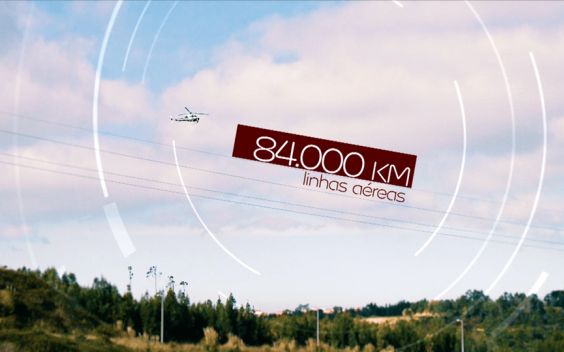
These criteria, applicable to Fuel Management under the National Fire Protection System, fall within the scope of the Diploma approved by the Council of Ministers on 25 January 2018 and enacated by the Portuguese President on 6 February. In the last five years,
EDP Distribuição has regularly cleared the forest around 40,000 km of the high and medium voltage air grid, representing an investment of EUR 25 million. All these interventions are carried out in partnership with specialized companies, in collaboration with the local authorities and in the strict compliance with the legislation in force and the Municipal Fire Protection Plans. Protected species such as cork oaks or holm oaks are spared, as required by law, and they are trimmed or have branches cut off if necessary.
After the intervention in a zone, the year of intervention is signalled on the electricity pylons guaranteeing adequate management of registration of the work. In parallel to these forest clearing, EDP Distribuição maintains the overhead electrical grid under permanent surveillance, with programmes to monitor the lines, increasingly using new technologies. Visual, thermographic and laser-guided inspections are performed, thus ensuring the regulatory distance of the conductors to trees, providing the bases for predictive and corrective maintenance. This procedure, which was carried out using a helicopter until a few years ago, has been carried out more recently also using drones.
This intervention has contributed to make overhead lines more resilient to adverse weather events that have been occurring more frequently in recent years. It is essential for the prevention of forest fires, facilitating direct intervention by fire service vehicles to combat them and reducing the effects of their passage.
The work is carried out in collaboration with the local councils, following Municipal Plans to Protect the Forest against Fires, and strict compliance with the legislation in force. We also recall here that the land owners, when high and medium voltage overhead lines are built across their land, are compensated for the establishment of the easement strip. According to the legislation in force, land owners are the ones responsible in the first place for not permitting and not planting vegetation that could endanger the operation of the overhead lines.
Find out more by consulting the documents.